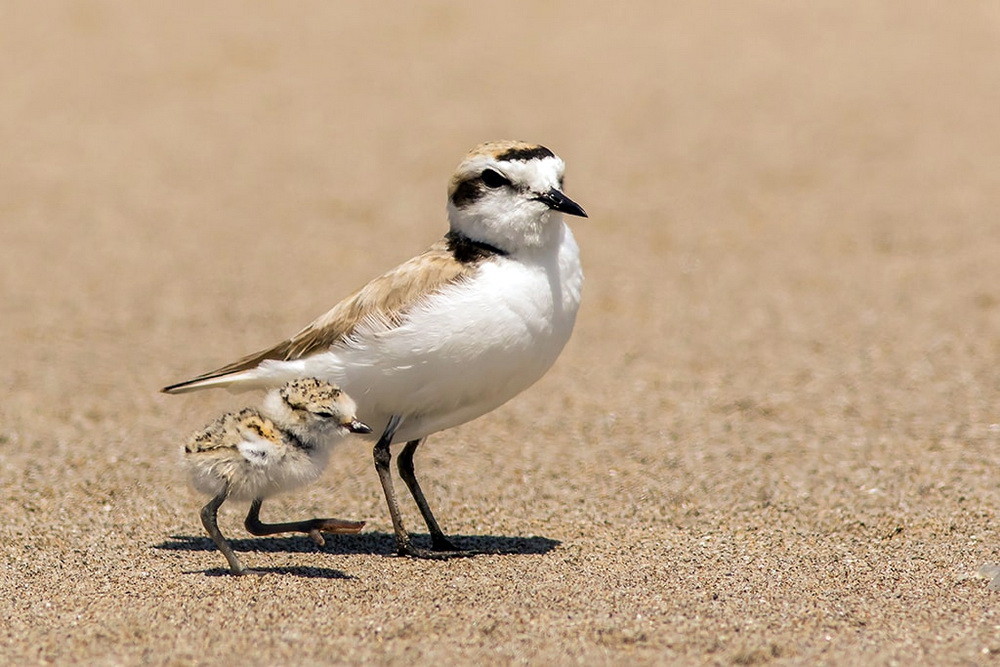Resources > News
CoastWatchers Monitor Snowy Plover Nesting Sites


Nesting season has begun for the threatened Western Snowy Plover, the only resident shorebird that nests on the Oregon coast. Signs are going up, warning beachgoers about the presence of plovers.
CoastWatchers can help by carefully observing restrictions on beach use to protect the nesting birds, and by noting and reporting violations of the rules. But this only covers areas where snowy plovers are known to nest. CoastWatchers—and any other concerned observers—can also keep an eye out for plovers inhabiting areas not officially designated for them. If a plover nest is found outside of a Snowy Plover Management Area (SPMA), it will be roped off if authorities are notified. To report nests outside of an SPMA, notify Laurel Hillmann at State Parks. To report violations, contact Laurel and also Cheryl Strong at U.S. Fish and Wildlife Service.
Thanks to laborious management efforts, the plover population is growing, and there are stretches of shoreline featuring suitable habitat which might be colonized.The U.S. Fish and Wildlife Service listed the Western Snowy Plover as a threatened species in 1993, when officials counted only 55 breeding adults. The numbers of breeding adults have steadily increased since then, from 107 in 2003 to 604 in 2021.
Beachgoers are urged to help snowy plover recovery efforts by staying on the wet sand along snowy plover beaches during nesting season, March 15—Sept. 15. Beachgoers will see ropes that identify sensitive plover nesting areas in the dry sand, as well as signs that identify restrictions to protect the small shorebirds during this period.
Plover beaches remain open to foot and equestrian traffic on wet, packed sand throughout the nesting season. All other recreation on plover beaches is off limits on both wet and dry sand, including walking your dog (even on a leash), driving a vehicle, riding a bicycle, camping, burning wood or other materials, and flying kites or drones.
These small birds nest on open sand along Oregon’s beaches. Nests, and especially chicks, are well-camouflaged. During the nesting season, human disturbances can flush adult plovers away from their nests as they attempt to defend their young. Left alone too long, or too often, eggs or chicks can die from exposure, predators, or people. Habitat loss from invasive plants — as well as human disturbances, including litter and discarded food scraps that attract predators — have contributed to the birds’ decline
Recreation restrictions occur in designated plover management areas: small stretches of beach along the entire coastline where plovers are nesting or could potentially nest. These areas collectively include about 40 miles of Oregon’s 362 miles of shoreline. Detailed maps can be found on the Oregon State Parks website and on the Siuslaw National Forest website. Visitors to the Oregon Dunes National Recreation Area can review maps to identify unrestricted recreation areas and information on riding motor vehicles on the sand. Several land management agencies oversee beach activity for plover protection, primarily the U.S. Forest Service (USFS), the Bureau of Land Management (BLM) and Oregon Parks and Recreation Department (OPRD).
